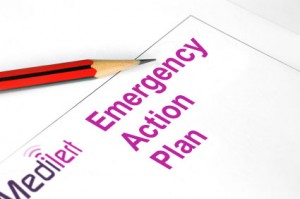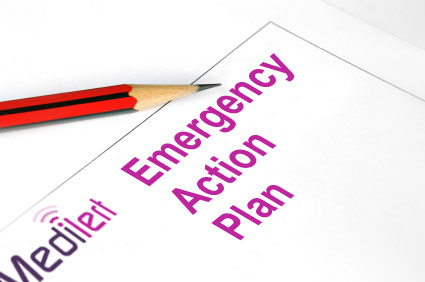Developing policies and procedures aimed at preventing or reducing the risk of injury is just one part of risk management. Regardless of the amount of time you spend crafting and implementing these protocols, action remains the key to responding properly in an emergency. A critical piece of the puzzle is the Emergency Action Plan (EAP). This plan outlines the procedures to be taken in case an emergency, so that it can be dealt with calmly, efficiently and in a more organized manner. Every organization should have an Emergency Action Plan in order to have an effective risk management plan.
Emergency Action Plans deal with a wide range of incidents, such as fires, tornadoes, sports injuries, bomb threats, chemical leaks, terrorist attacks, violence, and missing persons.
A good EAP outlines each individual’s responsibility during an accident. It should be discussed and shared with all members of the organization. Everyone involved should undergo comprehensive training for the EAP to work. There are different emergency scenarios that can happen anytime. While no one can predict when it will happen, we can always prepare for the unexpected with practice. Possibilities can range from bomb threats, bioterrorism, athletic injuries, or any situation that requires action to be taken by designated individuals. Heads of organizations should be prepared with different forms of emergencies or face the consequences.
Every kind of emergency requires unique responses. For example, bomb threats or fire requires immediate evacuation, while medical emergencies require managing and treating injuries.
 In most cases, the initial response during the first few minutes of an emergency can ultimately determine the outcome of the accident. For instance, if an individual suddenly loses consciousness, is not breathing, and has no pulse. The first thing to do is to initiate CPR right away. More frequently, people are afraid to start CPR because of the fear that they will not be able to provide “step-by-step” CPR and be held liable for the injuries of the person. But the truth is that any action you take is helpful. Meanwhile, apathy and lack of action is worse than doing CPR “less-than-perfect”.
In most cases, the initial response during the first few minutes of an emergency can ultimately determine the outcome of the accident. For instance, if an individual suddenly loses consciousness, is not breathing, and has no pulse. The first thing to do is to initiate CPR right away. More frequently, people are afraid to start CPR because of the fear that they will not be able to provide “step-by-step” CPR and be held liable for the injuries of the person. But the truth is that any action you take is helpful. Meanwhile, apathy and lack of action is worse than doing CPR “less-than-perfect”.
In Canada, Good Samaritan acts are a provincial power. Each jurisdiction has its own laws that protect healthcare providers, emergency medical services personnel, and other rescuers from legal liabilities when providing emergency help to victims. However, the rescuer must have practiced under reasonable, prudent guidelines. Several conditions also need to be satisfied in order to be covered by the Good Samaritan law: 1) it should be a voluntary act; 2) there is consent or no objection from the person receiving help; and 3) the actions are done under good-faith effort to help.
For example, a lifeguard who is off-duty witnesses an emergency and decides to help cannot be sued if his actions were not perfect, since he is not under any legal obligation. However, if the lifeguard is at work and provides care that is less than the standards of care, he can be held liable.
It is very important to develop an EAP that is simple and clear-cut. This will help everyone understand it better therefore can be efficiently implemented.

